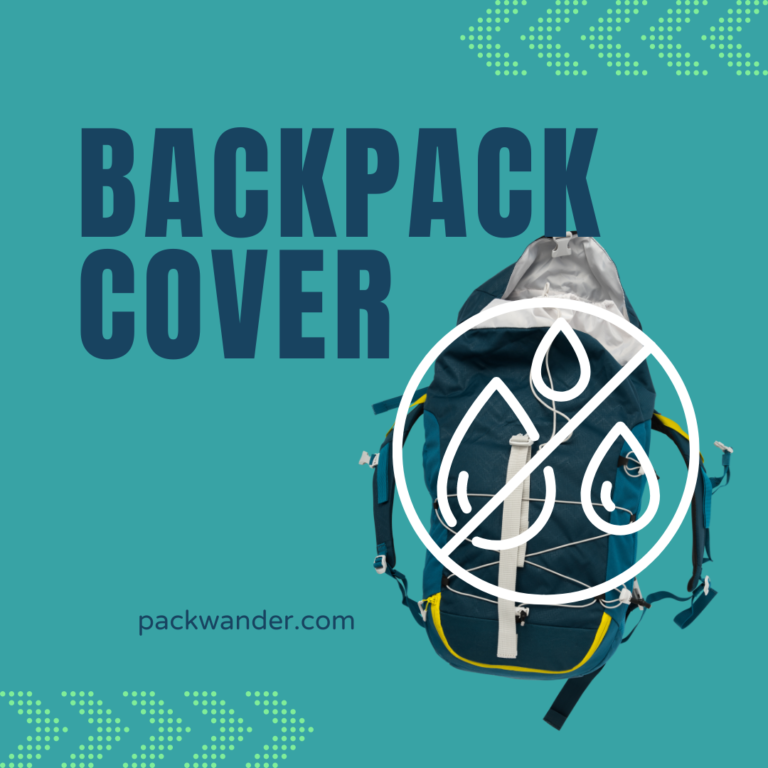What Size Backpack for Kindergarten? A complete Guide
Starting kindergarten is an exciting step in a kid’s life. It’s all about making new friends, having fun, and learning new things. When we’re parents or caregivers, we want to make sure everything goes well for our kids. One important thing we might not think about too much is picking the right backpack for our kindergarteners.
In this blog post, we’ll talk about why it’s important to choose the right size backpack for your little one as they start kindergarten. A backpack isn’t just for carrying books and stuff – it’s like a buddy that goes with your child all day long. The size of the backpack matters a lot because it helps your child feel comfy, stay safe, and be happy during this special time. We’ll see why this choice is so important and how it can make kindergarten a really good experience for your kid.
What Size Backpack for Kindergarten?
The ideal size for a kindergarten backpack is small to medium, with a capacity of around 10 to 15 liters. This size allows space for a lunchbox, water bottle, change of clothes, and a small toy. It should fit comfortably on the child, be lightweight, and made from durable materials. Choosing a backpack with adjustable straps, reflective features, and a design your child loves is important. Prioritize their comfort and safety while ensuring the backpack isn’t too heavy for them to carry.
Overall Dimension
The dimensions of a suitable kindergarten backpack typically range from approximately 12 to 16 inches in height, 10 to 13 inches in width, and 5 to 8 inches in depth. These dimensions provide enough room for essential items like a lunchbox, water bottle, and a change of clothes, while still maintaining a manageable and comfortable size for a young child to carry. Remember, it’s important to prioritize a proper fit, durability, and features that enhance your child’s comfort and safety.
Factors to Consider When Selecting a Backpack Size for Kindergarteners:
Choosing the right size backpack for your kindergartener involves several important factors that contribute to their comfort, safety, and overall experience. Here are the key considerations to keep in mind:
- Capacity: The backpack’s capacity refers to how much it can hold. Look for a backpack with a capacity of around 10 to 15 liters. This size allows enough space for their essentials, like a lunchbox, water bottle, and a change of clothes. Avoid oversized backpacks that might encourage carrying unnecessary weight.
- Fit: A well-fitting backpack is crucial. The shoulder straps should be adjustable and padded to ensure a comfortable fit on your child’s shoulders. The backpack should sit snugly against their back without sagging or pulling. A chest strap can also help distribute the weight evenly.
- Weight: Keep in mind that the backpack itself adds weight to what your child carries. Opt for a lightweight backpack made from materials that are sturdy yet not overly heavy. This prevents unnecessary strain on their developing muscles and spine.
- Durability: Kindergarteners can be quite active, so a backpack should be durable enough to withstand daily wear and tear. Look for reinforced stitching, strong zippers, and quality materials that can handle the rigors of kindergarten life.
- Design: The design of the backpack should appeal to your child’s interests. Whether it features their favorite colors, characters, or patterns, a backpack they like will make them more excited about using it. However, while design is important, ensure that functionality and comfort are not compromised for aesthetics.
By carefully considering these factors, you can select a backpack size that provides the right balance of capacity, fit, weight, durability, and design. This thoughtful approach will contribute to a positive and enjoyable kindergarten experience for your child.
Recommended Backpack Size for Kindergarten Children:
When it comes to selecting the appropriate backpack size for kindergarten children, it’s important to find a balance between functionality and comfort. A general guideline for the right size is a backpack with dimensions around 12 to 16 inches in height, 10 to 13 inches in width, and 5 to 8 inches in depth. This size provides ample room to carry essential items while ensuring the backpack is manageable and easy for your child to carry.
Remember, the key is to avoid overloading your child with a backpack that’s too large for their small frame. Overloading can lead to discomfort, strain on their muscles, and potentially affect their posture. A backpack that is too big may also create unnecessary challenges for them, such as difficulty in navigating through crowded hallways or storing it in a classroom cubby.
By choosing a backpack size that aligns with their body proportions and needs, you’re promoting a healthier and more enjoyable experience for your kindergartener. A properly sized backpack ensures that they can carry their essentials comfortably, move around with ease, and focus on the exciting adventures that await them in kindergarten.
Benefits of Choosing the Right Size Backpack:
Selecting the right size backpack for your kindergartener goes beyond just aesthetics – it has significant impacts on their comfort, well-being, and overall experience. Here are some important benefits of choosing the appropriate backpack size:
- Preventing Strain and Discomfort: A backpack that is too large or too heavy can lead to strain on your child’s muscles, particularly in their shoulders, neck, and back. By opting for the right size, you help distribute the weight evenly and prevent unnecessary stress on their growing body. This reduces the chances of discomfort and soreness, allowing them to move freely and comfortably throughout the day.
- Supporting Proper Posture: A well-fitting backpack encourages your child to maintain good posture. When the backpack fits correctly and is positioned snugly against their back, it promotes an upright stance and minimizes the risk of slouching or hunching over. This is crucial for their developing spine and overall musculoskeletal health.
- Reducing Potential Health Issues: Carrying an oversized or heavy backpack on a regular basis can contribute to more serious health issues over time. These may include backaches, muscle strain, and even spinal misalignment. By opting for the right size backpack, you’re taking a proactive step in safeguarding your child from these potential long-term health concerns.
- Enhancing Mobility and Confidence: A properly sized backpack allows your child to move around freely and confidently. They won’t be burdened by an overly large or awkwardly fitting backpack, which can hinder their ability to navigate their surroundings and participate in physical activities. The right size backpack empowers them to explore, play, and engage in the kindergarten environment with enthusiasm.
- Cultivating Healthy Habits: Introducing your child to the importance of choosing the right size backpack from a young age helps instill valuable habits related to ergonomics and self-care. Teaching them to prioritize their physical well-being early on sets a foundation for making informed decisions about their health as they grow.
In conclusion, the benefits of selecting the right size backpack for your kindergartener extend far beyond mere convenience. By prioritizing their comfort, posture, and overall health, you’re contributing to a positive and enjoyable kindergarten experience while equipping them with essential lessons in self-care.
Tips for Choosing the Ideal Backpack for Your Kindergartener:
Selecting the right backpack for your kindergartener involves thoughtful consideration and a touch of practicality. Here are some valuable tips to guide you in making the best choice:
- Involve Your Child: Bring your child into the decision-making process. Let them have a say in choosing a backpack they like – one with colors, designs, or characters that resonate with their interests. When they feel a sense of ownership, they’re more likely to embrace and take care of their backpack.
- Try It On for Fit: Before making a decision, have your child try on the backpack. Adjust the shoulder straps to ensure a snug fit on their shoulders. The bottom of the backpack should rest near their lower back, and the top should not extend beyond their shoulders. A well-fitting backpack ensures comfort and prevents strain.
- Check for Adjustable Straps: Look for backpacks with adjustable shoulder straps. This feature allows you to customize the fit as your child grows. Adjustable straps ensure the backpack stays secure and distributes weight evenly, contributing to a more comfortable carrying experience.
- Assess Empty Backpack Weight: Lift the empty backpack to gauge its weight. A lightweight backpack is preferable, as it ensures your child isn’t starting with extra weight before adding their belongings. A heavy empty backpack could potentially strain your child’s shoulders and back, even before they pack it.
- Prioritize Comfort and Safety: Ensure that the backpack has padded shoulder straps to cushion the weight and prevent discomfort. Look for a chest strap that helps keep the shoulder straps in place and promotes better weight distribution. Additionally, consider reflective elements for safety, especially if your child walks to school or will be out in low-light conditions.
- Mind the Capacity: While it’s tempting to go for a larger backpack to accommodate more items, remember that a kindergartener’s backpack should be appropriately sized. Stick to the recommended dimensions and capacity to prevent overloading and discomfort.
- Quality and Durability: Choose a backpack made from durable materials with reinforced stitching and sturdy zippers. A well-made backpack can withstand the daily wear and tear of kindergarten activities.
- Try Before You Buy: Whenever possible, visit a store to physically try out different backpacks. This allows you to see how the backpack fits your child and assess its features in person.
By keeping these practical tips in mind, you can ensure that your kindergartener’s backpack is not only visually appealing but also functional, comfortable, and tailored to their needs.
Examples of Kindergarten Backpacks:
Here are examples of kindergarten backpacks that meet the recommended size and features, ranging from budget-friendly to higher-end options:
Budget-Friendly Options:
- Skip Hop Zoo Little Kid Backpack: These adorable backpacks come in various animal designs and are a hit among kindergarteners. They feature adjustable padded straps, a roomy main compartment, and a front pocket.
- Jansport Half Pint Mini Backpack: Known for their durability, Jansport offers smaller versions of their classic backpacks. The Half Pint Mini features adjustable shoulder straps and a front utility pocket.
- Trailmaker Classic 5″ Mini Backpack: This compact backpack has a simple design, adjustable straps, and a front zipper pocket. It’s perfect for carrying essentials without overwhelming your child.
Mid-Range Options:
- Pottery Barn Kids Mackenzie Backpack: These backpacks come in a variety of stylish designs and sizes, including the mini size suitable for kindergarteners. They feature adjustable straps, multiple pockets, and a water-resistant exterior.
- Herschel Supply Co. Heritage Youth Backpack: Herschel offers youth-sized versions of their popular backpacks. The Heritage Youth Backpack has a classic design, padded straps, and a media pocket.
- L.L.Bean Junior Original Book Pack: L.L.Bean’s Junior Original Book Pack is designed for young children. It features a comfortable fit, reflective details, and a name tag inside.
Higher-End Options:
- Fjällräven Kånken Mini Backpack: This iconic Swedish backpack comes in a smaller size suitable for kids. It has adjustable shoulder straps, a front zip pocket, and is made from durable materials.
- Deuter Kikki Backpack: Deuter’s Kikki Backpack is designed specifically for kids, featuring comfortable padding, adjustable straps, and a playful design.

3. Tula Kids Backpack: Tula offers high-quality backpacks with ergonomic padding, adjustable straps, and a spacious main compartment. They often come in attractive patterns and colors.
Remember to consider your child’s preferences and needs when choosing a backpack. Each of these options provides a mix of style, functionality, and comfort to ensure a great kindergarten experience.
Conclusion:
In the journey of a kindergartener, every detail matters – and the choice of a backpack is no exception. As we’ve explored throughout this blog post, selecting the right size backpack holds profound significance for your child’s comfort, well-being, and overall kindergarten experience.
By adhering to the guidelines provided for capacity, fit, weight, durability, and design, you ensure that your child’s backpack becomes a trusted companion rather than a burden. The benefits are far-reaching: from preventing discomfort and strain to cultivating healthy habits and supporting proper posture, the right size backpack lays the foundation for a positive path forward.
Remember, the act of involving your child in the selection process, trying on backpacks for fit, checking for adjustable straps, and assessing the backpack’s weight are all instrumental steps in making an informed decision. Prioritize their comfort, safety, and enjoyment by choosing a backpack that not only suits their needs but also aligns with their interests and style.
As your kindergartener steps into this new chapter of their life, let their backpack be a source of confidence and ease, accompanying them on every adventure, from the classroom to the playground and beyond. By making the conscious choice to prioritize the right size backpack, you contribute to a brighter and more enjoyable kindergarten journey, setting the stage for growth, learning, and countless cherished memories. learn more about backpacks







